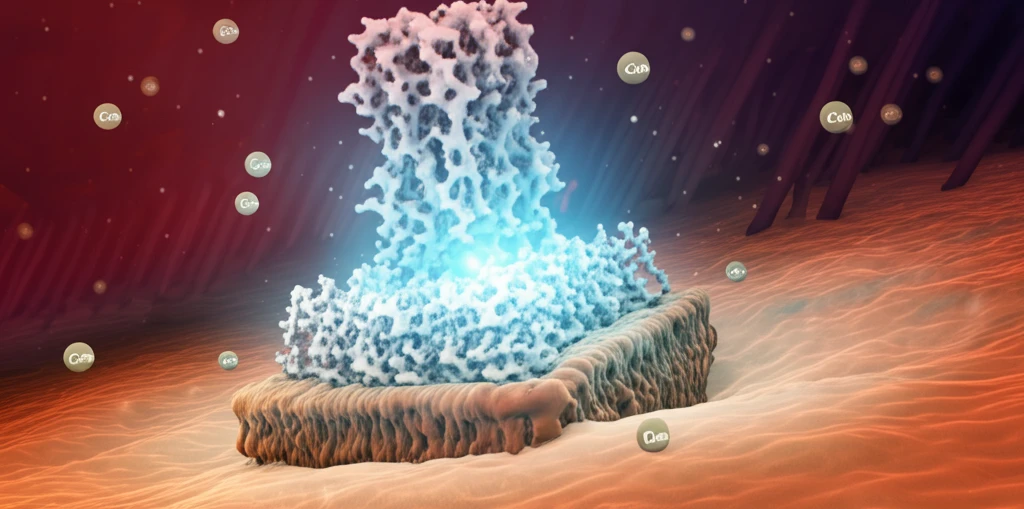
Unlock Your Body's Calcium Secrets: How TRPV6 Could Revolutionize Your Health
"Discover the fascinating world of TRPV6, a key player in calcium absorption, and its potential impact on everything from bone health to cancer treatment."
Calcium, a mineral vital for bone health, nerve function, and muscle contraction, requires a sophisticated system for absorption and regulation. At the heart of this system lies TRPV6, a protein channel that acts as a gateway for calcium to enter our cells. Recent research has illuminated the multifaceted role of TRPV6, revealing its involvement in various physiological processes and its potential as a therapeutic target for a range of diseases.
This article aims to demystify TRPV6, exploring its structure, function, and significance in maintaining overall health. We'll delve into how TRPV6 influences calcium absorption in the gut, its connection to bone mineralization, and its surprising role in cancer development. Understanding TRPV6 could unlock new strategies for promoting bone health, preventing kidney stones, and even fighting cancer. Join us as we explore the groundbreaking science behind this essential calcium channel.
Targeting a mixed audience, especially health-conscious individuals and those curious about the science behind wellness, we aim to provide clear and insightful information. Whether you are dealing with calcium deficiencies, exploring cancer therapies, or simply interested in optimizing your health, this is your guide to TRPV6.
Decoding TRPV6: Structure and Function

TRPV6, short for transient receptor potential cation channel subfamily V member 6, is a protein that acts as a channel, allowing calcium ions to pass through cell membranes. Imagine it as a gatekeeper, meticulously controlling the flow of calcium into cells. This gatekeeper is particularly important in the intestines, where it facilitates the absorption of calcium from the food we eat. TRPV6 is composed of 15 exons and 14 introns, featuring regions that encode ankyrin repeats, six transmembrane domains, and a pore region crucial for calcium selectivity.
- Acts as a calcium channel in cell membranes.
- Facilitates calcium absorption in the intestines.
- Regulated by vitamin D and calmodulin.
- Forms complexes with other proteins, like TRPV5.
TRPV6: A Promising Target for Future Therapies
While more research is needed, TRPV6 represents a promising area of study for new therapeutic interventions. As we unravel the complexities of TRPV6, we move closer to innovative therapies that could significantly improve human health. From enhancing calcium absorption to potentially fighting cancer, the future of TRPV6 research is bright and full of possibilities.
